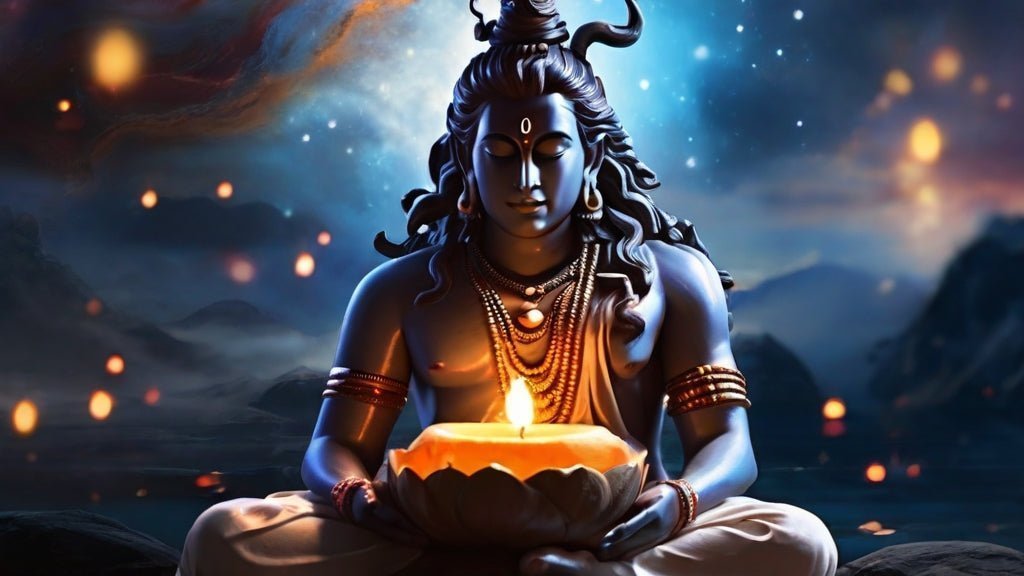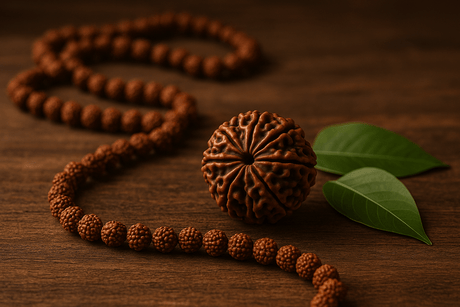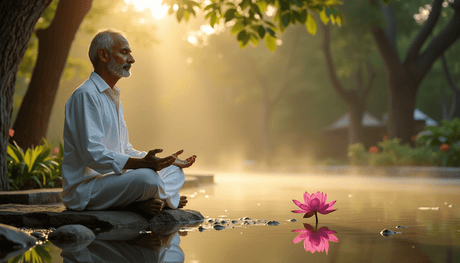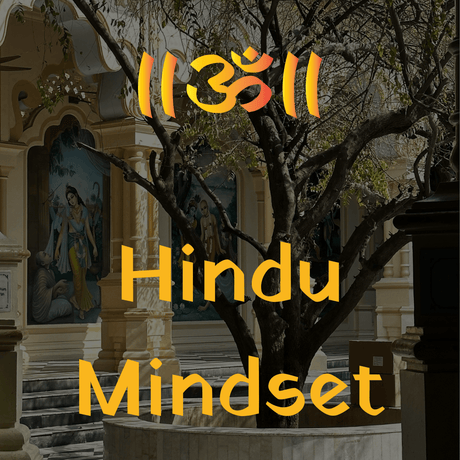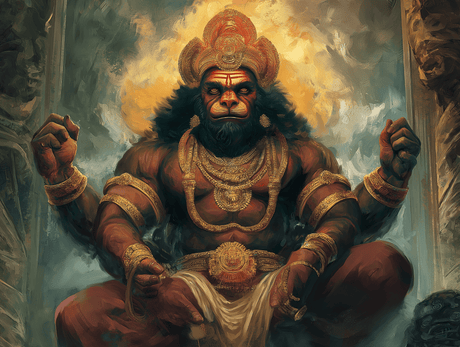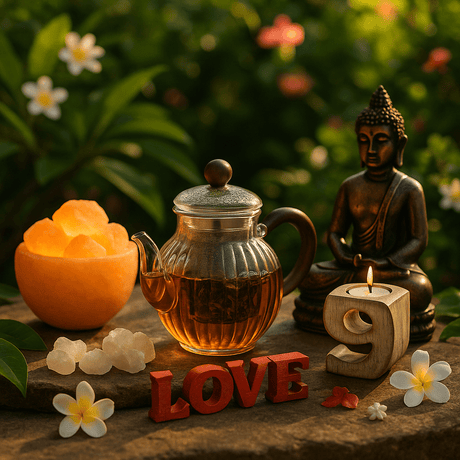Mahashivaratri, also known as the «Great Night of Shiva», is a vibrant Hindu festival celebrated annually. This night of spiritual awakening honors Lord Shiva, a central deity in Hinduism, symbolizing destruction and renewal.
Beyond its spiritual significance, Mahashivaratri fosters a deep sense of community. Devotees come together for a night of fasting, prayers, meditation, and vibrant celebrations.
What is Mahashivaratri?
Maha Shivaratri, which translates to «Great Night of Shiva», is a vibrant Hindu festival that celebrates the power and grace of Lord Shiva. It's a night steeped in spiritual significance, observed with a mix of devotion, reflection, and even a touch of festivity.
For some, it's a time to commemorate the divine union of Shiva and Parvati, a night of immense cosmic energy. Others associate it with a different story, marking the descent of the Shiva Linga, a symbolic representation of the deity.
Regardless of the specific story, Maha Shivaratri offers an opportunity for devotees to connect with their inner selves and experience the transformative power Shiva embodies.
Why is Mahashivaratri Celebrated?
Maha Shivaratri is celebrated for a confluence of reasons, weaving together mythology, history, and spiritual beliefs.
One major reason is to honor Lord Shiva himself. Depending on the tradition, it's either the night he performed the Tandava, the cosmic dance of creation, preservation, and destruction, or the night he wed Parvati, symbolizing the union of masculine and feminine energies.
Beyond these grand narratives, Maha Shivaratri is seen as a powerful night for spiritual growth. Some believe it's a time of heightened energy, ideal for meditation and seeking inner peace. Others view it as an auspicious occasion to overcome negativity and transform oneself, mirroring Shiva's own power to dismantle and rebuild.
So, Maha Shivaratri is a celebration that transcends a single story. It's a night to honor Shiva, tap into spiritual potential, and experience the transformative power this deity represents.

Myths of Maha Shivaratri
Pinpointing the exact origin of Maha Shivaratri is challenging because Hinduism is a rich tapestry of traditions passed down through generations, often not in written form. However, there are several well-known stories and significant traditions associated with the festival's emergence that are documented in various Puranas, including the Skanda Purana, Linga Purana, and Padma Purana.
- The Marriage of Shiva and Parvati. One popular legend, as reiterated in these sacred texts, tells of Shiva and Parvati's celestial union. After years of devotion, Parvati wins Shiva's heart, and their marriage is celebrated on the 14th day of the dark fortnight in Phalguna. This night, believed to be especially blessed, marks the divine union of masculine and feminine energies.
- The Descent of the Shiva Linga. Another legend describes a fiery column of light erupting from Lord Shiva, prompting Brahma and Vishnu to find its source. They fail, and Shiva reveals himself on the 14th night of Phalguna, establishing the importance of this night for Shiva worship. The festival involves offering reverence to Shiva lingam, symbolizing this divine manifestation.
- The Tandava Cosmic Dance. This night is also associated with Shiva's Tandava—the heavenly dance of creation, preservation, and destruction. It is believed that Shiva performs this dance on Maha Shivaratri, underlining the cyclical nature of the universe. The chanting of hymns, reading of Shiva scriptures, and the chorus of devotees during the festival echo this cosmic dance.
Adding to these narratives are various legends emphasizing the significance of the rituals performed during Maha Shivaratri:
- Absolution and Liberation. One tradition holds that offerings to Shiva icons, such as the lingam, serve as an annual opportunity for devotees to atone for past sins and embark on a path of righteousness, ultimately aiming for liberation (moksha) and ascent to Mount Kailasha, Shiva's abode.
- The Story of Nilakantha. Another tale recounts Shiva consuming the Halahala poison churned from the ocean during the Samudra Manthana to protect the universe. Holding it in his throat turned it blue, thus earning him the name Nilakantha, or "Blue-throated One." The Neelkanth Mahadev Temple is reputed to be the site where this transformative event occurred.
Cultural Significance and Celebrations
Natyanjali — Worship through Dance. The historical significance of dance during Maha Shivaratri is profound. The festival serves as a historic confluence of artists at major Hindu temples such as Konark, Khajuraho, Pattadakal, Modhera, and particularly Chidambaram, where the Natyanjali festival, meaning "worship through dance," is held. The Chidambaram temple, noted for its sculptures depicting dance mudras from the ancient Natya Shastra, highlights this celebration. Additionally, at Khajuraho Shiva temples, major fairs and dance festivals involving Shaiva pilgrims have been historically documented, reflecting the festival's deep-rooted cultural resonance.
These narratives and rituals highlight the core themes of Maha Shivaratri: celebrating Lord Shiva, emphasizing spiritual significance, and reflecting the union and cyclical nature of the universe, all of which foster a profound connection to divine energies and cultural heritage.

How is Mahashivaratri Celebrated Across Different Regions of India?
Maha Shivaratri's vibrant spirit unfolds differently across India's rich tapestry.
- Himalayan Echoes. In Himachal Pradesh, devotees visit the holy town of Mandi for a raucous chariot procession honoring Shiva. The clanging of bells and vibrant colors create a unique atmosphere.
- Ganga's Embrace. Haridwar and Rishikesh in Uttarakhand witness a surge in pilgrims taking sacred dips in the Ganges. This ritual purification sets the tone for the night's devotion.
- Marigold Magic. Tamil Nadu comes alive with vibrant displays of marigolds adorning Shiva temples. Here, the focus is on elaborate puja ceremonies and offerings of bael leaves.
- Jagran Nights. In West Bengal, unmarried women perform elaborate puja (worship) seeking blessings for good husbands. Throughout the night, communities gather for jagran (staying awake) sessions filled with devotional songs and stories.
- Fasting and Festivities. Across Maharashtra, Gujarat, and Karnataka, a stricter observance of fasting is common. Yet, the night culminates in grand processions and cultural performances.
This is just a glimpse into the diverse ways India celebrates Maha Shivaratri. Each region adds its own unique flavor, showcasing the multifaceted nature of this ancient festival.
The Spiritual Benefits of Observing Mahashivaratri
Mahashivaratri offers a powerful opportunity for spiritual growth. This night pulsates with cosmic energy, allowing devotees to unlock a range of profound benefits:
- Inner Peace and Transformation. Through meditation and self-reflection, devotees can achieve inner peace and shed negativity, embracing positive change like Lord Shiva himself, the embodiment of transformation.
- Heightened Spiritual Energy. Rituals and staying awake help devotees tap into the immense cosmic energy of the night, leading to deeper meditation and prayers believed to carry more weight.
- Dissolve Karmas. Sincere observance is said to help absolve past karmas. Through devotion and self-reflection, devotees pave the way for a brighter spiritual future.
- Connect with Lord Shiva. Maha Shivaratri is ultimately a celebration of Lord Shiva. By participating, devotees strengthen their connection with this powerful deity, seeking blessings for spiritual growth, knowledge, and liberation.
Rituals of Mahashivaratri
Maha Shivaratri is a night of devotion and spiritual seeking, observed through various rituals that hold deep meaning.
- Fasting. Devotees often undertake a full-day or partial fast, signifying self-restraint and dedication. This physical sacrifice allows them to focus their minds on spiritual matters.
- Jagran (Staying Awake). A key practice is staying awake throughout the night, engaging in prayers, devotional songs (bhajans), and meditation. This signifies perseverance and the pursuit of enlightenment, mirroring Shiva himself, who is often depicted as sleepless and ever-aware.
- Abhishek (Sacred Bathing). A central ritual involves the ceremonial bathing of the Shiva Linga, a symbolic representation of Shiva. Devotees pour various offerings like milk, honey, yogurt, ghee (clarified butter), and water. Each offering has a specific meaning: milk signifies nourishment, honey represents sweetness, yogurt symbolizes purity, ghee denotes inner fire, and water washes away impurities. The abhishek ritual signifies cleansing and renewal, seeking Shiva's blessings for a fresh start.
- Bilva Patra Offering. The leaves of the bel (bilva) tree are considered sacred offerings to Shiva. Offering these leaves signifies surrender and devotion. The intricate three-fold structure of the bilva leaf is said to represent the three aspects of Shiva – the Creator, the Preserver, and the Destroyer.
- Darshan and Mantra Chanting. Devotees visit Shiva temples for darshan, a glimpse of the deity to seek his blessings. Chanting sacred mantras, particularly "Om Namah Shivaya," is another common practice. Mantras are believed to have spiritual vibrations that can elevate consciousness and connect the devotee with Shiva.
These rituals, along with personal reflection and meditation, create a powerful spiritual experience during Maha Shivaratri. By participating, devotees aim to achieve inner peace, overcome negativity, and connect with the transformative power of Lord Shiva.
Can Mahashivaratri Be Celebrated By Non-Hindus?
Absolutely, Maha Shivaratri can be celebrated by non-Hindus! It's a festival that transcends religion and offers a chance to experience a rich cultural tradition and spiritual significance. Here are some ways non-Hindus can participate:
- Temple Visits. Many Hindu temples open their doors to all during Maha Shivaratri. You can visit a temple to observe the rituals, appreciate the decorations, and experience the peaceful atmosphere.
- Learning About Shiva. Take some time to learn about Lord Shiva and the stories associated with Maha Shivaratri. This will enhance your understanding of the festival's significance. There are many online resources and books available.
- Meditation and Reflection. The core themes of Maha Shivaratri involve inner peace and self-reflection. You can participate in these aspects by meditating or simply spending some quiet time reflecting on your own life.
- Respectful Observation. If you do attend a temple ceremony, dress modestly and be mindful of the customs. Observe quietly and avoid disrupting the ongoing prayers or rituals.
- Vegetarian Feast. Many Hindus observe a vegetarian diet during Maha Shivaratri. You can prepare a vegetarian meal to honor this tradition and experience the flavors associated with the festival.
- Embrace the Colors. Maha Shivaratri can be a visually stunning celebration. Decorate your home with vibrant colors or wear something festive to show your appreciation for the cultural richness of the occasion.
Remember, the most important aspect is to approach the festival with respect and an open mind. By participating in these ways, non-Hindus can gain a deeper appreciation for Maha Shivaratri and its significance for Hindus around the world.

Foods of Mahashivaratri
Mahashivaratri is a special occasion, but unlike some Hindu festivals, it often involves fasting or following a specific diet. Here's a breakdown of traditional foods associated with this unique festival:
Fasting Foods (Vrat ka Khaana):
- Sabudana Khichdi. A popular choice, this savory dish is made with tapioca pearls (sago), peanuts, boiled potatoes, and spices. It's gluten-free, light on the stomach, and perfect for breaking a fast.
- Kuttu ki Puri (Buckwheat Puris). Since wheat is often avoided during fasting, these crispy puris are made with buckwheat flour (kuttu). They're typically served with a potato-based sabzi (vegetable dish).
- Singhara ki Kheer (Water Chestnut Pudding). This sweet dish is made with water chestnuts (singhara), milk, nuts, and jaggery (unrefined cane sugar). It's a delicious and nutritious way to end a fast.
- Fruits and Nuts. Fresh fruits and nuts are a healthy and permitted option for those observing a fast. Apples, bananas, and dry fruits like almonds and cashews are popular choices.
Special Treats (After Fasting):
- Sheera (Semolina Pudding). A sweet dish made with semolina flour, milk, sugar, and nuts. It's a simple yet satisfying way to celebrate after the fast.
- Aloo Tikki (Potato Patties). These crispy potato patties can be enjoyed fried or baked. They're a delicious and festive snack after the fast is broken.
- Thandai. A refreshing drink made with almonds, melon seeds, fennel seeds, rose water, and milk. It's perfect for cooling down and rehydrating after a day of fasting.
These are just a few examples, and regional variations abound. Some regions might have specific sweets or savory dishes associated with the festival.

Embracing the Essence of Mahashivaratri 🌙
Mahashivaratri, a festival dedicated to Lord Shiva, offers a profound opportunity for spiritual renewal and personal growth. Through rituals, fasting, and meditation, participants connect deeply with the spiritual energies of this auspicious night. Explore themes of transformation and healing, whether you're observing the traditions or simply learning about the cultural significance. Mahashivaratri invites you to discover the transformative power of one of Hinduism's most revered celebrations.
